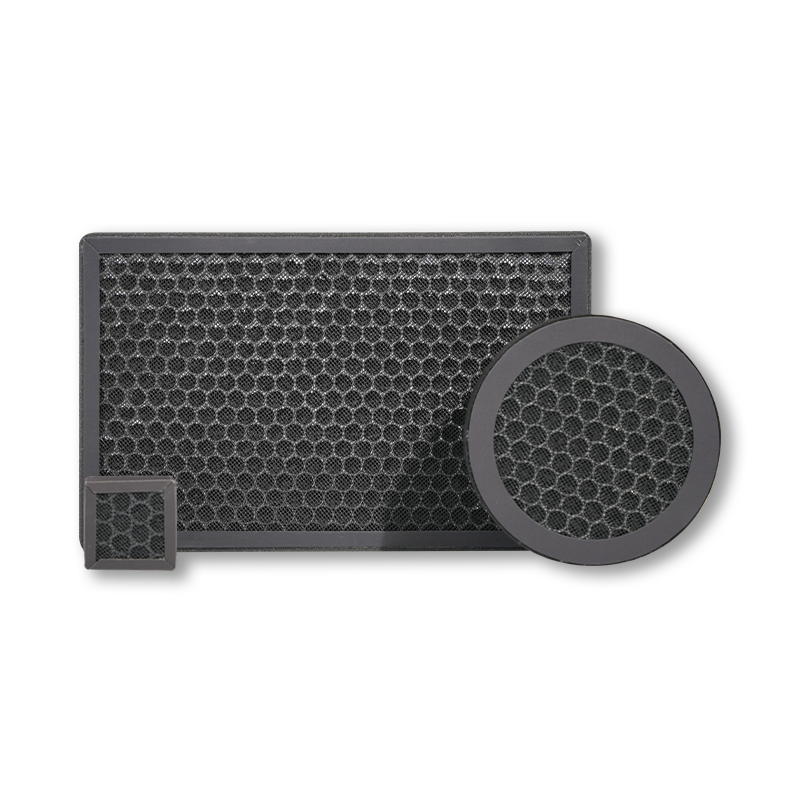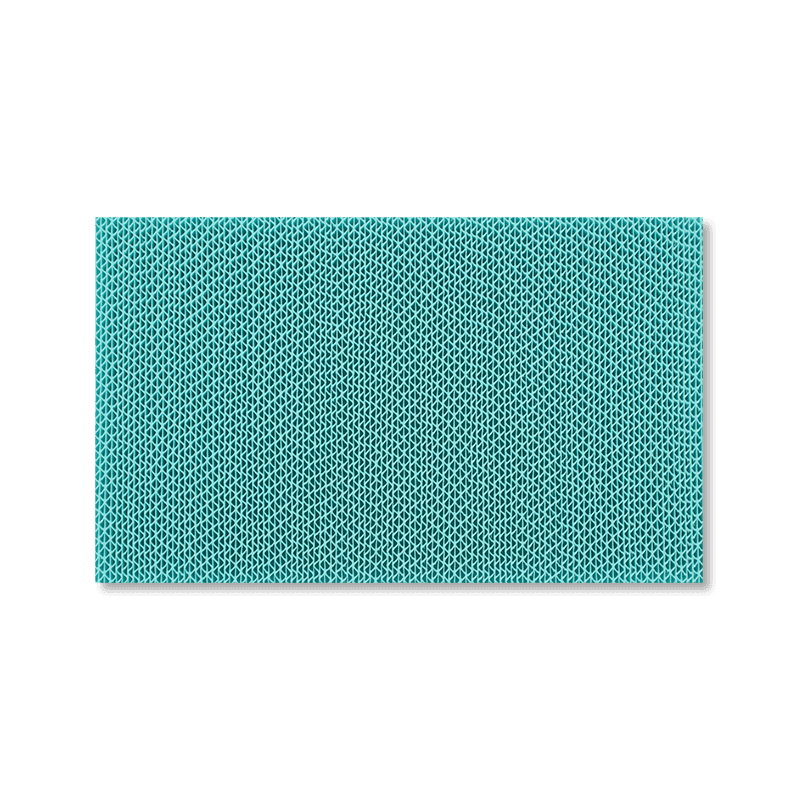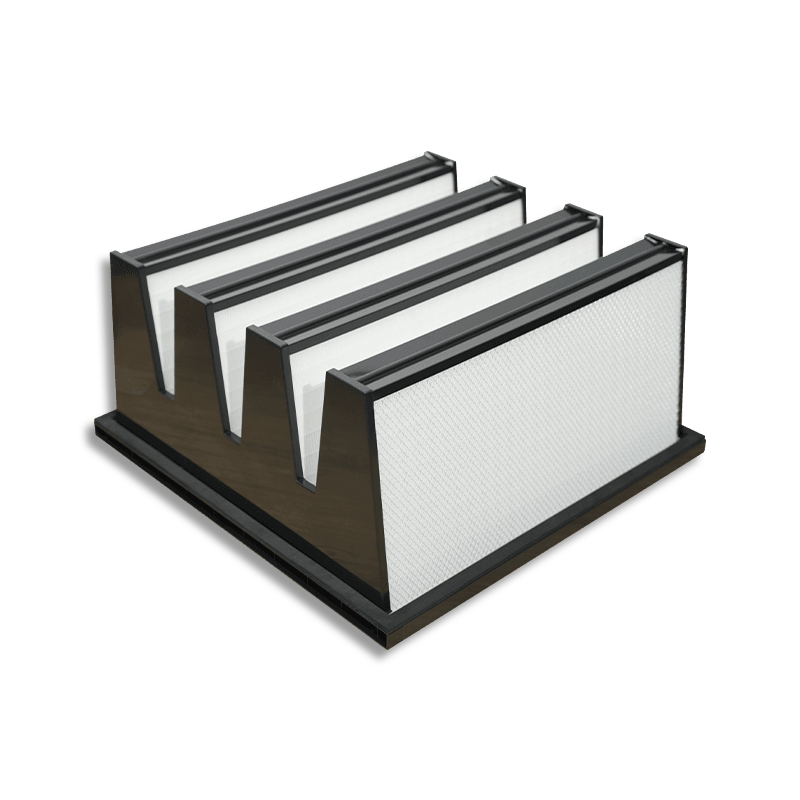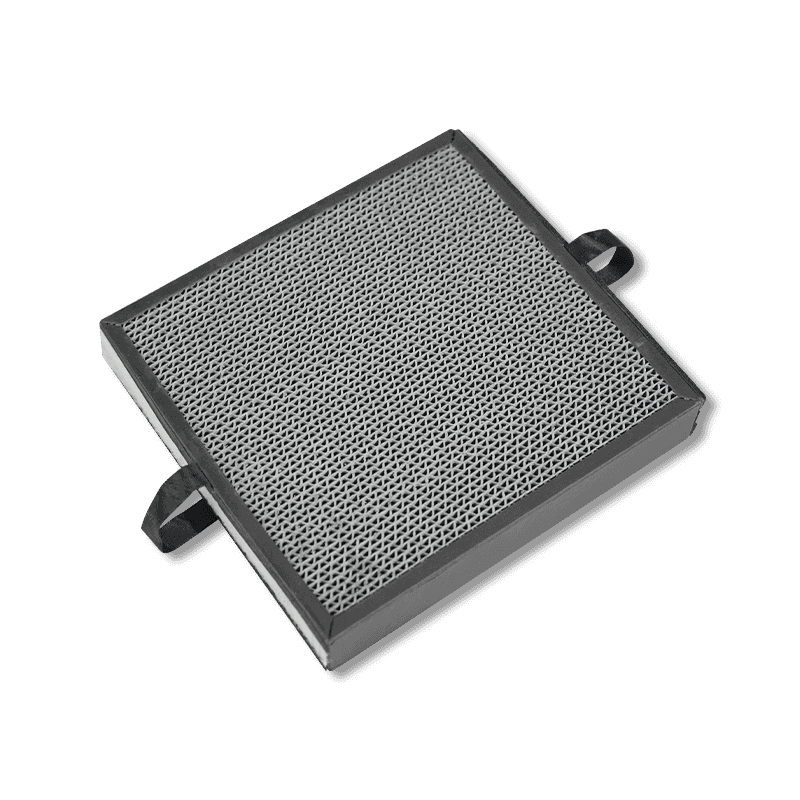Improving Adsorption Capacity
Activated carbon filter stands out among other carbon materials primarily due to its exceptional adsorption capacity. To remain competitive, its adsorption capacity and selectivity must be continuously optimized. Specifically, the following methods can be used to enhance activated carbon's performance:
Increasing surface area and pore structure: Traditional activated carbon possesses a high surface area, enabling it to adsorb a wide range of gases, liquids, or dissolved substances. However, different adsorption targets require different pore size and distribution. By improving the activation process (such as using water vapor, carbon dioxide, or chemical activators), the pore structure of activated carbon can be customized to enhance its adsorption performance for specific pollutants. For example, using feedstocks such as biomass or coal and employing different activation techniques can produce activated carbon with a higher surface area and more uniform pore size, thereby improving its overall adsorption efficiency.
Functional Modification: The surface of activated carbon can be chemically or physically modified to introduce specific functional groups, such as amino, hydroxyl, or carboxyl groups. These functional groups can enhance the adsorption selectivity of activated carbon for specific pollutants. For example, certain heavy metals (such as lead and cadmium) have a particular affinity for these substances. Functionalized activated carbon can enhance adsorption capacity by tailoring its surface chemistry. In contrast, novel materials like graphene and carbon nanotubes (CNTs) typically require more complex synthesis processes and are more expensive. Therefore, functionalized activated carbon can still compete with novel materials in terms of adsorption performance in specific applications.
Optimizing Adsorption Kinetics: In addition to increasing adsorption capacity, adsorption rate is also a key characteristic of activated carbon. To remain competitive in the rapid pollutant treatment market, optimizing the activated carbon's pore structure, pore size distribution, and surface chemistry is crucial. By adjusting the activation process, its pore structure can be manipulated, thereby improving adsorption kinetics. This allows activated carbon to be effective not only in traditional slow adsorption applications but also in applications requiring rapid pollutant treatment.
Cost and Availability
While novel carbon materials such as graphene and carbon nanotubes have demonstrated excellent performance in laboratory studies, they remain expensive to produce on a large scale. The cost advantage of activated carbon ensures its competitiveness in a wide range of applications. Here are a few reasons why activated carbon remains competitive:
Low Production Cost: The production process for activated carbon is relatively mature, and a wide range of raw materials are available, including agricultural waste (such as coconut shells, bamboo, and wood), coal, or other organic materials. Its production process consists of two basic steps: carbonization and activation. It requires no high-tech equipment and is amenable to large-scale production. In contrast, the production of new materials like graphene requires more complex equipment and higher energy consumption, resulting in higher costs. In particular, industrial-scale production of graphene and carbon nanotubes still faces challenges such as low efficiency and high costs.
Large-Scale Supply: The activated carbon supply chain is well-established, with numerous global manufacturers, ensuring an ample supply of raw materials and minimal price volatility. In contrast, the production of graphene and carbon nanotubes still relies on complex chemical synthesis or vapor deposition techniques. These processes not only require specialized laboratory conditions but are also subject to limitations in raw materials and production processes, resulting in uncertainty in both stability and price when produced on a large scale.
Sustainability: Using renewable biomass feedstocks (such as agricultural waste, wood, or food processing residues) to produce activated carbon not only helps lower production costs but also reduces reliance on non-renewable resources. Furthermore, the production process of biomass-based activated carbon is environmentally friendly and helps reduce carbon emissions, making it attractive for environmental protection and sustainable development.
Market Maturity: Activated carbon has a wide range of applications, including water treatment, air purification, food deodorization, and pharmaceutical adsorption. As the technology matures, activated carbon not only maintains low production costs but also meets the needs of various industries, making it competitive in price-sensitive markets.
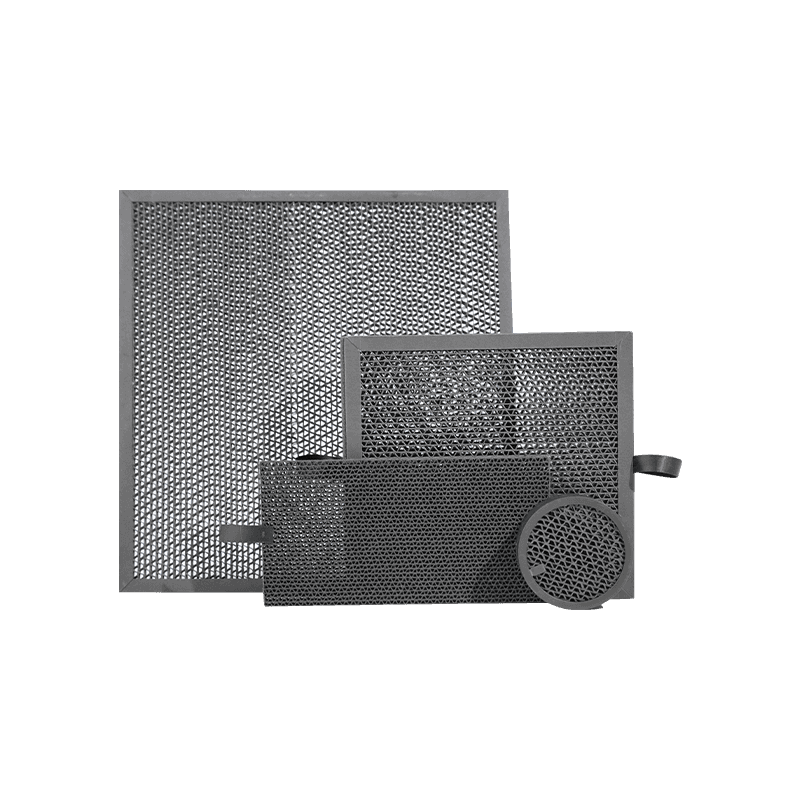
Composite Applications
With the development of new carbon materials, the adsorption performance of activated carbon alone may face challenges. However, combining it with other advanced materials to form composites can leverage its advantages and enhance overall performance. The following are several ways to combine activated carbon with new carbon materials:
Combining activated carbon with carbon nanotubes: Carbon nanotubes possess high mechanical strength and good electrical conductivity. When combined with activated carbon, they enhance its physical stability and electrical conductivity. In particular, in applications requiring high strength and good electrical conductivity, such as air and water treatment and pollutant decomposition, activated carbon composites reinforced with carbon nanotubes can offer enhanced performance. Such composites maintain the excellent adsorption properties of activated carbon while leveraging the advantages of carbon nanotubes, such as enhanced anti-pollution properties and structural stability.
Combining activated carbon with graphene: Graphene has become one of the emerging high-performance materials due to its excellent electrical, thermal, and mechanical properties. Combining graphene with activated carbon can significantly enhance the overall performance of the composite. For example, in water treatment, graphene can accelerate the adsorption rate of organic matter from water and enhance the mechanical stability of the activated carbon. In air purification, graphene's conductive properties can also help improve dust removal or adsorption efficiency.
Metal or Metal Oxide Loading Composites: By loading activated carbon with metals (such as copper, aluminum, and iron) or metal oxides (such as titanium dioxide and aluminum oxide), the surface of activated carbon can be endowed with catalytic properties and enhanced adsorption capacity. For example, the introduction of metal oxides can effectively remove harmful heavy metals or organic pollutants from water, while the addition of metal catalysts can help improve the efficiency of activated carbon in treating organic wastewater.
Composite materials not only enhance the performance of activated carbon but also expand its application areas, allowing it to complement new carbon materials in certain areas and jointly meet the market demand for high-efficiency filtration materials.
Targeted Filtration Applications
Activated carbon is currently primarily used in water treatment, air purification, and industrial waste gas treatment. However, with the rise of new carbon materials, its application scenarios are also expanding. To maintain competitiveness in the fierce market competition, activated carbon needs to focus on the following aspects:
Customization for specific pollutants: With the diversification of pollutants worldwide, activated carbon can optimize its adsorption capacity for specific pollutants by precisely controlling its pore size and surface chemistry. For example, certain new drugs or microplastics are emerging pollutants in water treatment. Activated carbon can be modified to efficiently adsorb these specific pollutants. Furthermore, activated carbon's adsorption capacity can be enhanced through surface functionalization to improve the removal efficiency of certain harmful gases, such as formaldehyde and sulfur dioxide.
Innovative Applications: Beyond traditional water treatment and air purification, activated carbon can also enter emerging markets such as food processing, pharmaceuticals, and energy storage. In food safety, activated carbon has been used to remove harmful substances such as pesticide residues and heavy metals from food. In the pharmaceutical field, its adsorption properties can be used for the sustained release of drugs or the removal of toxins. In the energy storage field, activated carbon is also used as a battery electrode material to enhance its energy storage capacity.
Efficient Treatment of Low-Concentration Pollutants: In the treatment of certain high-pollution sources, activated carbon needs to provide an effective adsorption solution for low-concentration pollutants. For example, in some industrial emissions, the pollutant concentrations are low, making traditional filtration technologies difficult to handle. Activated carbon can continue to play a role in these areas by further optimizing its pore structure and surface properties to enhance its adsorption capacity for low-concentration pollutants.

Sustainability and Renewability
Against the backdrop of growing global attention to sustainable development, activated carbon's regenerative and sustainable advantages help it maintain its competitiveness. The following are its key sustainability advantages:
Regeneration: Activated carbon can be reused multiple times through thermal or chemical regeneration, significantly reducing its operating costs. In certain applications, the regeneration process not only restores its adsorption capacity but also extends its lifespan. Through regeneration, activated carbon can continue to provide efficient pollutant removal, reducing the need for new materials—a particularly important consideration in cost-sensitive markets.
Eco-Friendly: Activated carbon is made from natural organic matter (such as wood and coconut shells) through high-temperature carbonization and activation, resulting in a relatively environmentally friendly production process. Compared to newer materials like graphene, the production process of activated carbon has a lower environmental impact. Furthermore, activated carbon is widely used in wastewater treatment, air purification, and other fields, playing a positive role in reducing environmental pollution.
Circular Economy: As a renewable material, activated carbon has a long lifespan and can be continuously recycled, achieving an efficient resource cycle. This aligns with current societal advocacy for a green and circular economy and meets increasingly stringent environmental regulations and policies.
Research and Development
Although activated carbon technology is relatively mature, it still requires continuous innovation and improvement to maintain its market competitiveness. Through enhanced research and development, activated carbon can continuously optimize its performance and find new opportunities in new application areas. The following are some potential R&D directions:
Improving the removal efficiency of specific pollutants: By analyzing the impact of different pollutants on the adsorption properties of activated carbon, researchers can develop targeted activated carbon materials. For example, they could develop specialized, high-efficiency adsorbent materials for certain volatile organic compounds (VOCs) or gaseous pollutants.
Optimizing the regeneration process: Further optimizing the activated carbon regeneration process will reduce potential environmental pollution during the regeneration process, improving its economic and sustainability. This will also help reduce long-term costs and enhance its market competitiveness.

 English
English Español
Español 日本語
日本語
